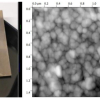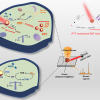
MIT scientists have now taken an important step toward making Raman spectroscopy a practical tool for diabetic patients to use to monito their blood sugar levels without a needle prick. They have shown that they can use it to directly measure glucose concentrations through the skin, as described in a paper in Science Advances. Until now, glucose levels had to be calculated indirectly, based on a comparison between Raman signals and a reference measurement of blood glucose levels. While more work is needed to develop the technology into a user-friendly device, this advance shows that a Raman-based sensor for continuous glucose monitoring could be feasible, says Peter So, a professor of biological and mechanical engineering at MIT.
“Today, diabetes is a global epidemic”, says So, who is one of the senior authors of the study and the director of MIT’s Laser Biomedical Research Center. “If there were a good method for continuous glucose monitoring, one could potentially think about developing better management of the disease.”
MIT’s Laser Biomedical Research Center has been working on Raman-spectroscopy-based glucose sensors for more than 20 years. The NIR laser beam used for Raman spectroscopy can only penetrate a few millimetres into tissue, so one key advance was to devise a way to correlate glucose measurements from the interstitial fluid to blood glucose levels. However, another key obstacle remained: the signal produced by glucose tends to get drowned out by the many other tissue components found in skin.
“When you are measuring the signal from the tissue, most of the strong signals are coming from solid components such as proteins, lipids and collagen. Glucose is a tiny, tiny amount out of the total signal. Because of that, so far we could not actually see the glucose signal from the measured signal”, Kang says.
To work around that, the MIT team has developed ways to calculate glucose levels indirectly by comparing Raman data from skin samples with glucose concentrations in blood samples taken at the same time. However, this approach requires frequent calibration, and the predictions can be thrown off by movement of the subject or changes in environmental conditions. For the new study, the researchers developed a new approach that lets them see the glucose signal directly. The novel aspect of their technique is that they shine NIR light onto the skin at about a 60 ° angle, but collect the resulting Raman signal from a fibre perpendicular to the skin. This results in a stronger overall signal because the glucose Raman signal can be collected while unwanted reflected signal from the skin surface is filtered out.
The researchers tested the system in pigs and found that after 10–15 min of calibration, they could get accurate glucose readings for up to an hour. They verified the readings by comparing them to glucose measurements taken from blood samples.
“This is the first time that we directly observed the glucose signal from the tissue in a transdermal way, without going through a lot of advanced computation and signal extraction”, So says.
Further development of the technology is needed before the Raman-based system could be used to monitor people with diabetes, the researchers say.














